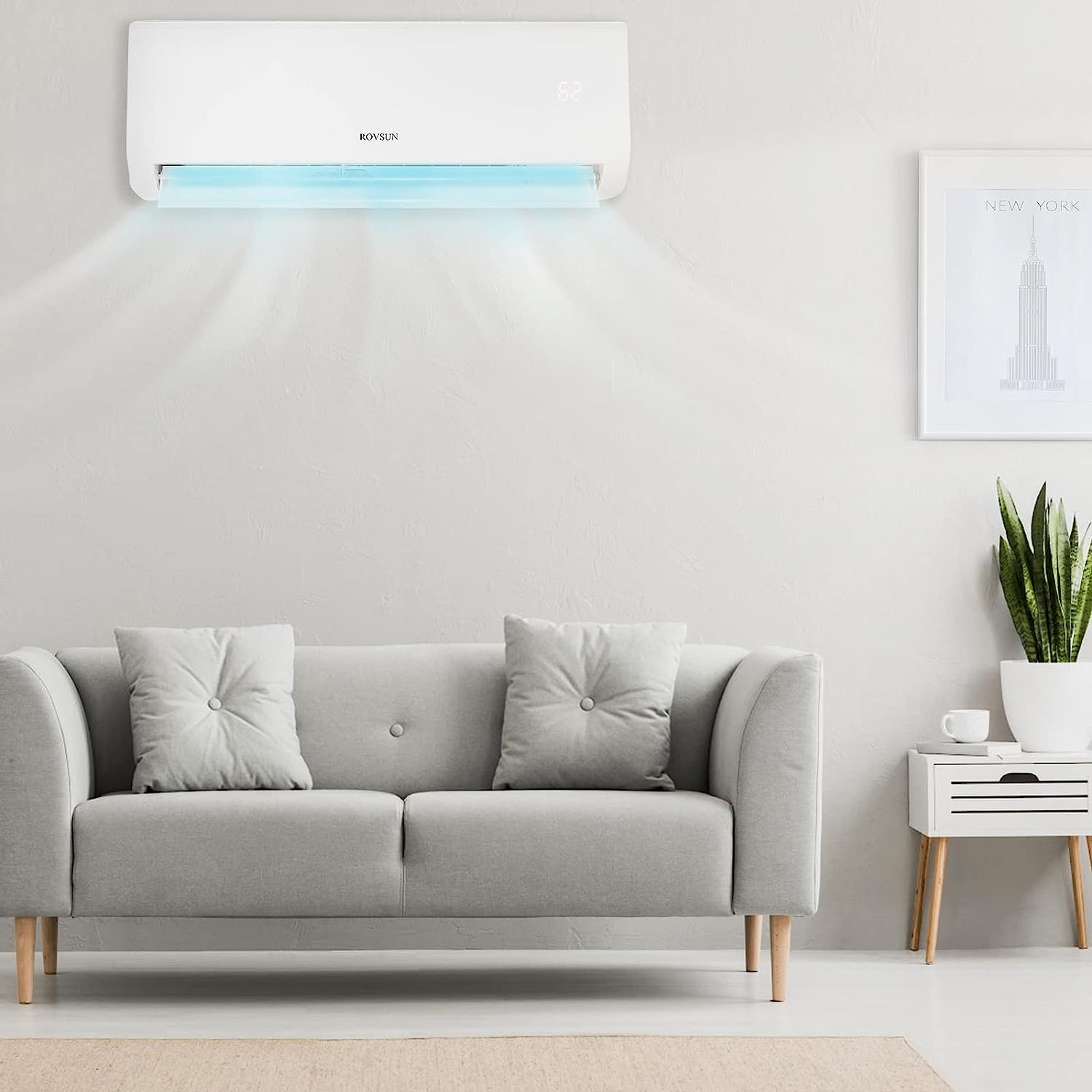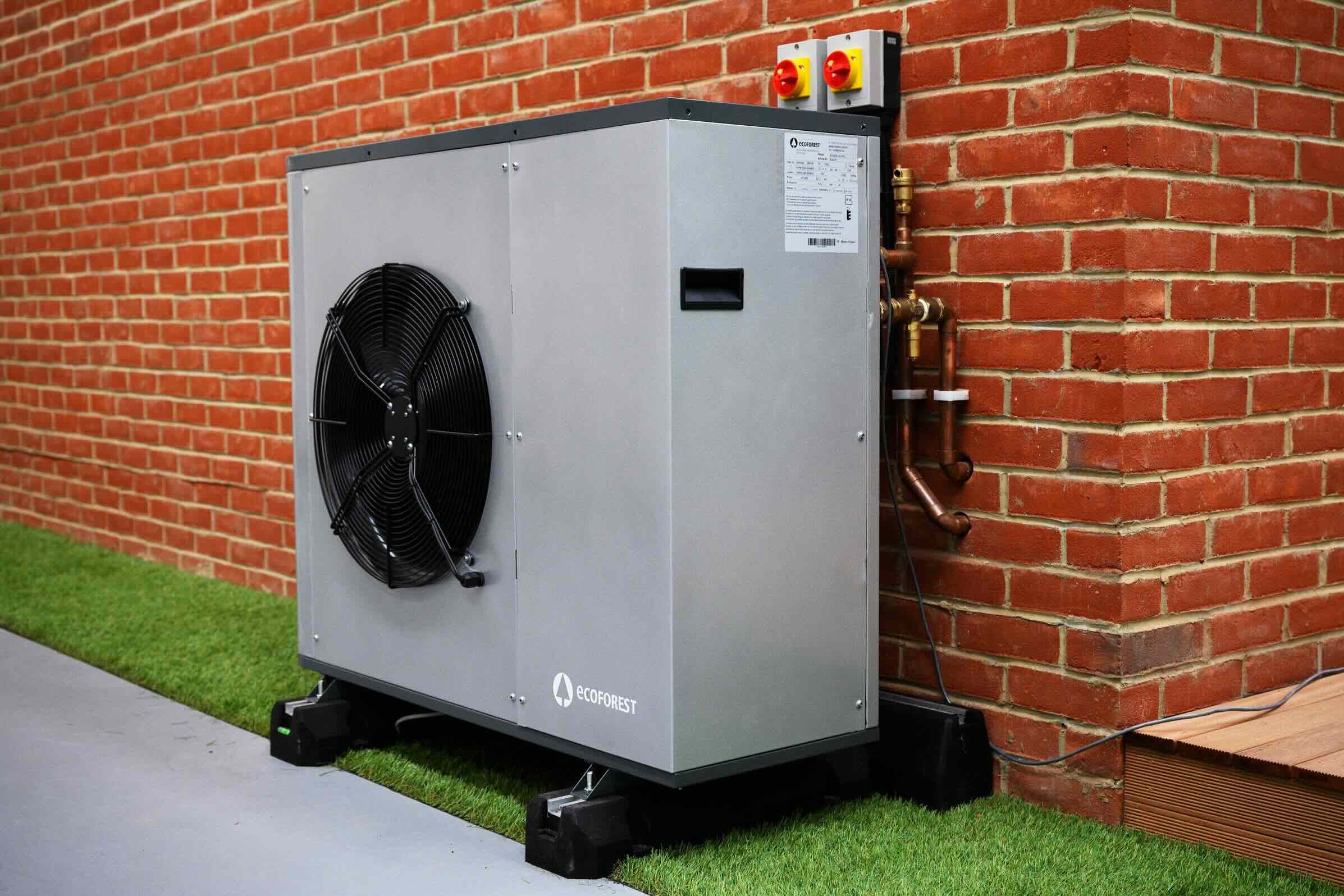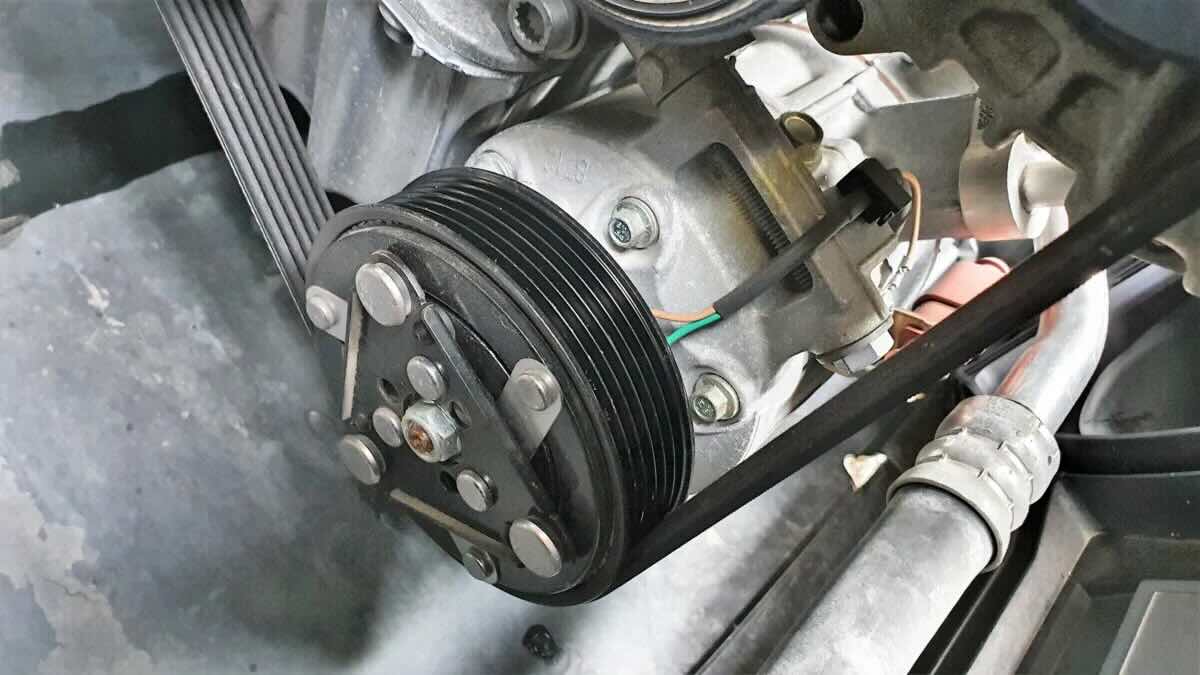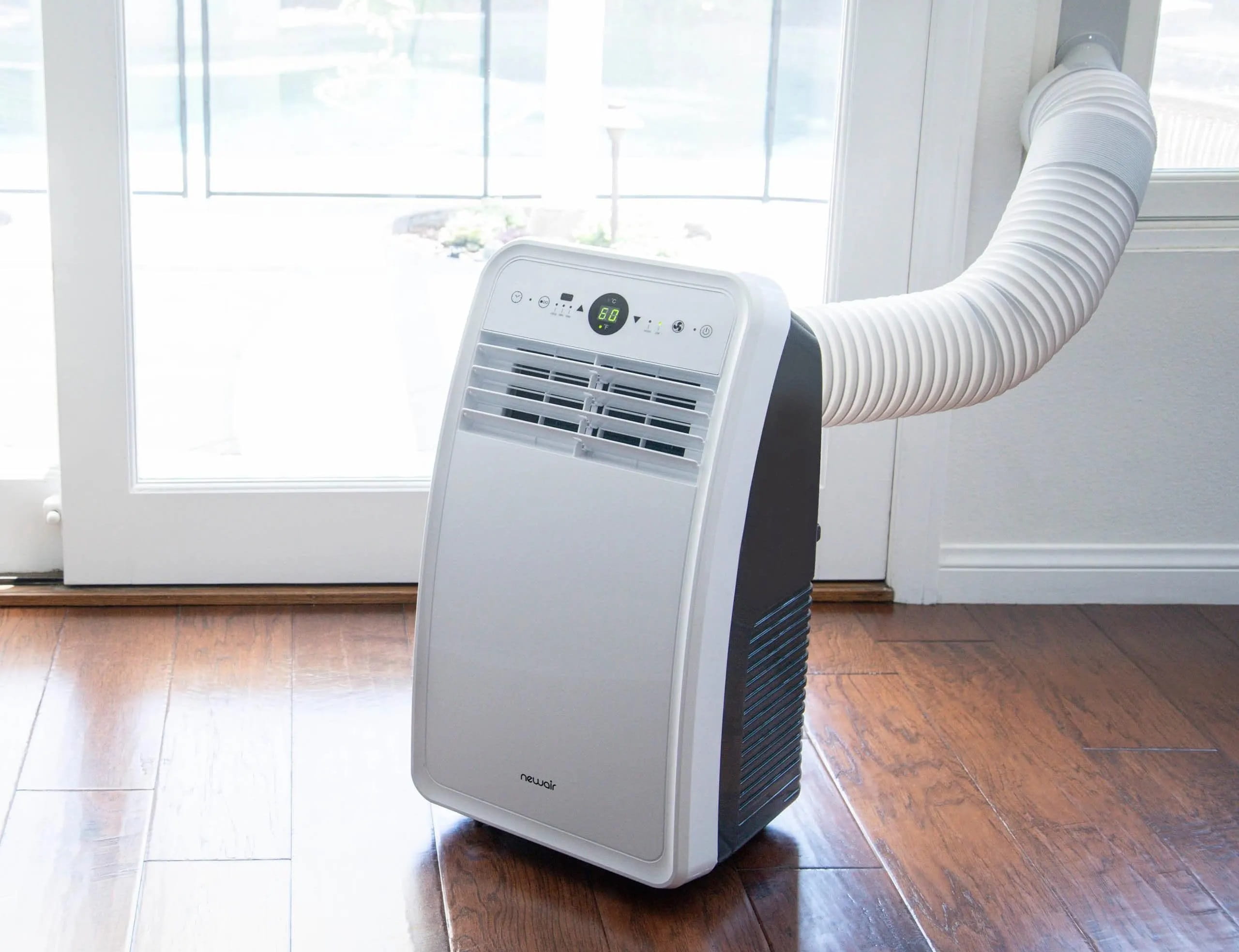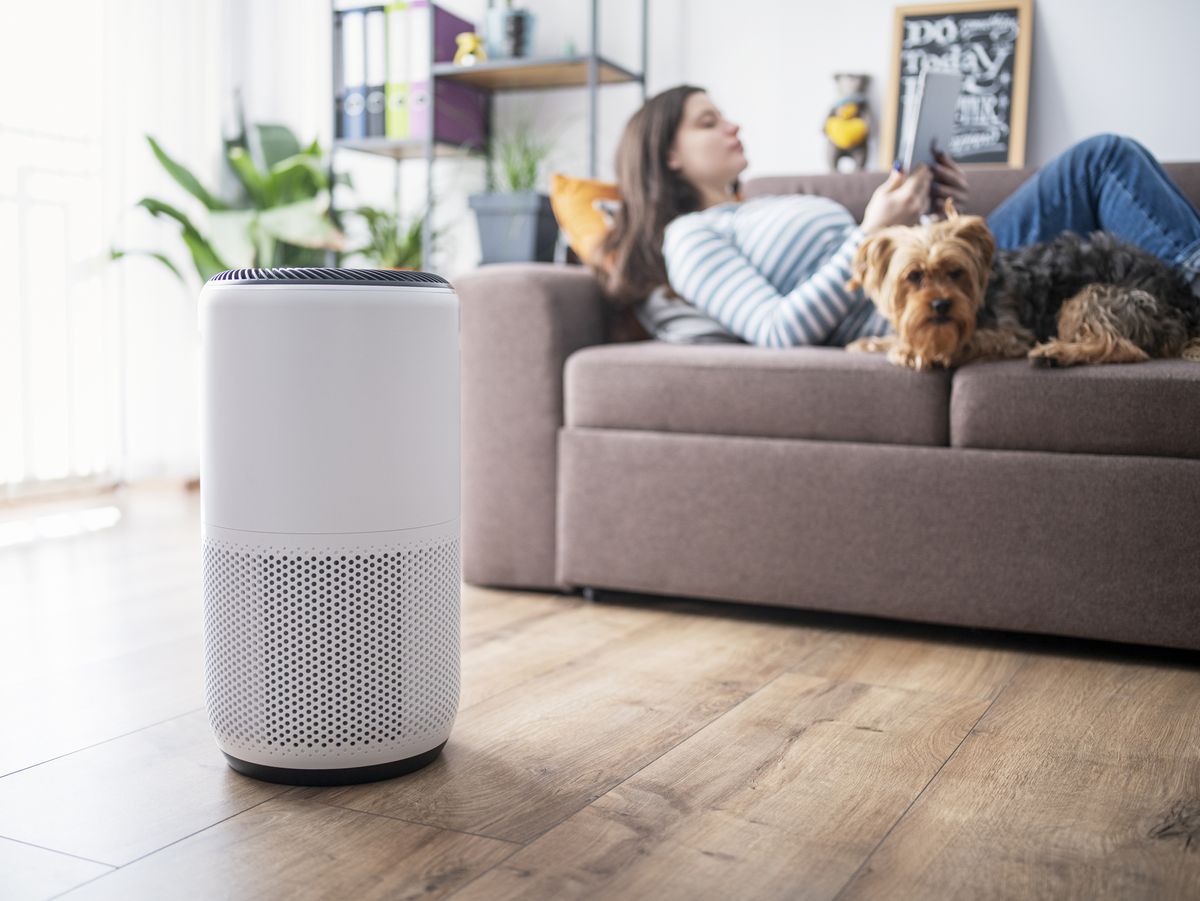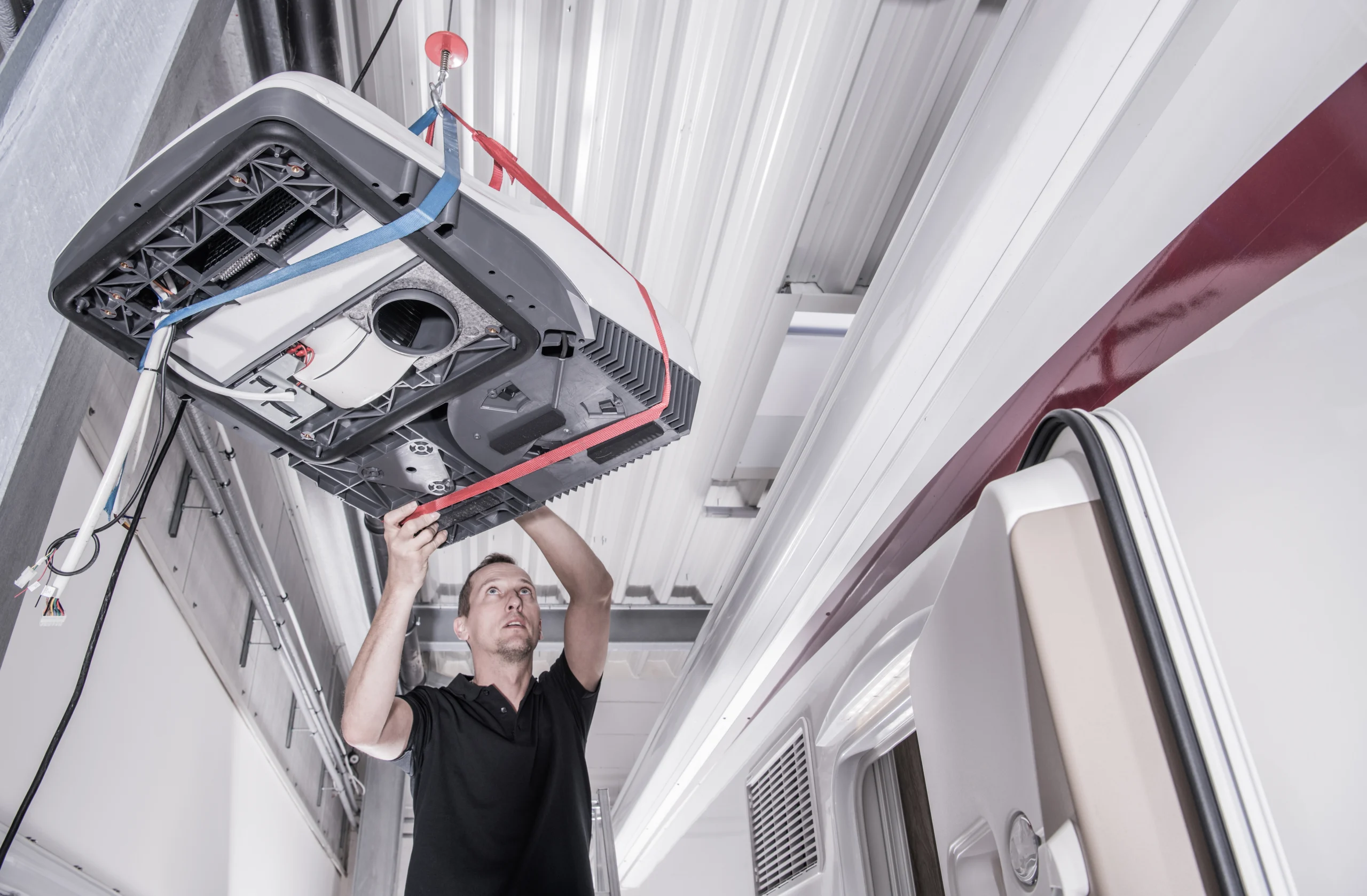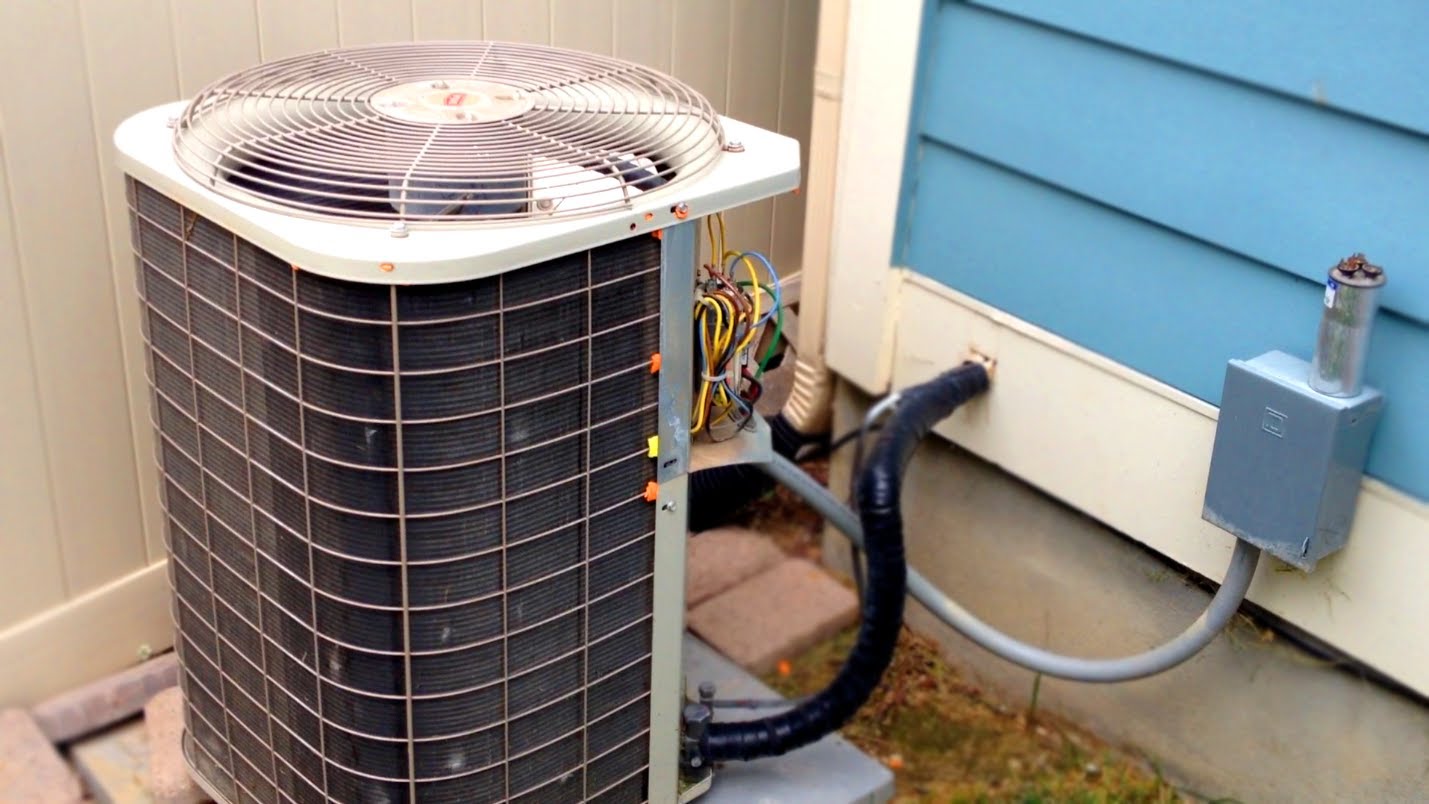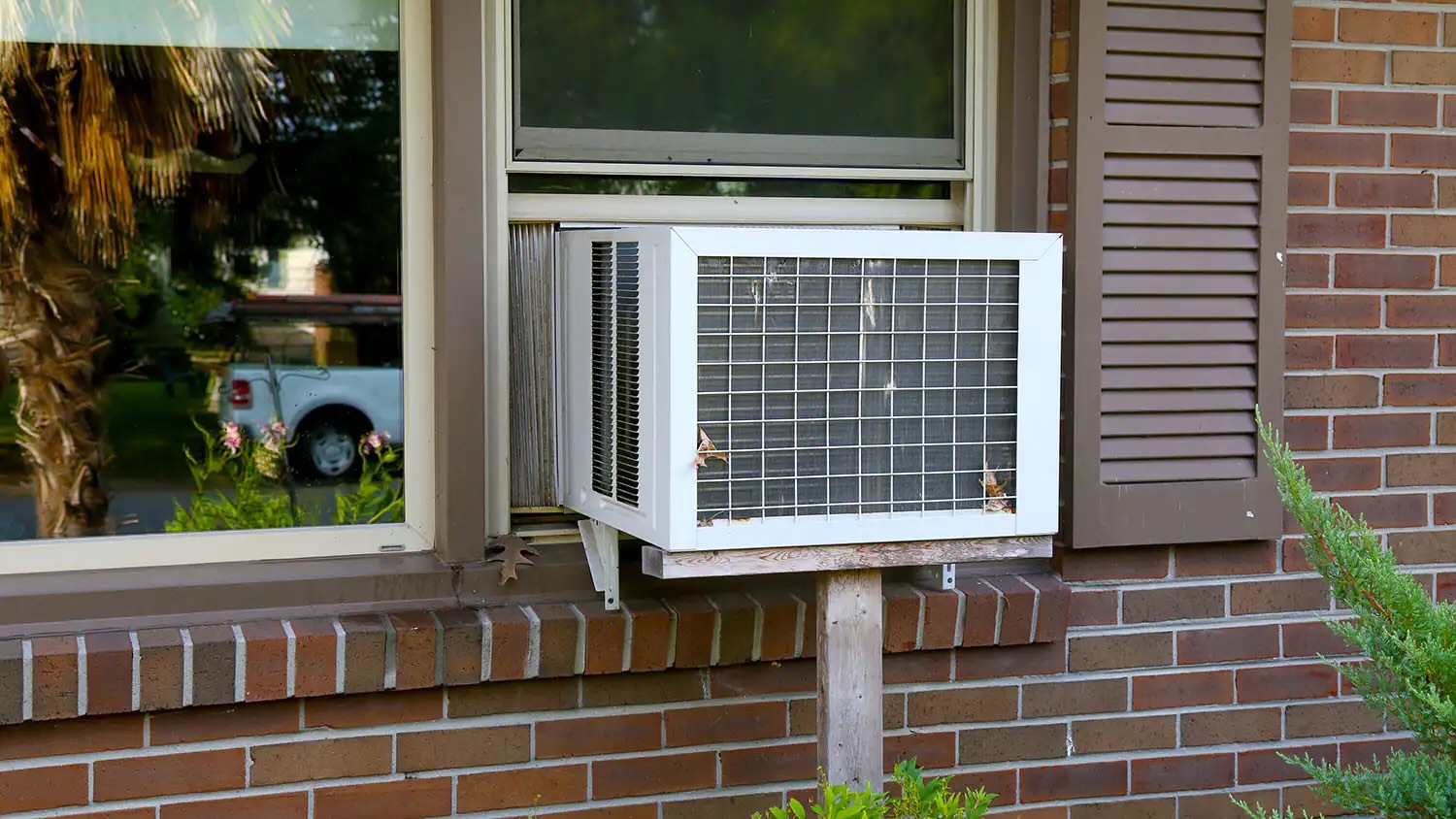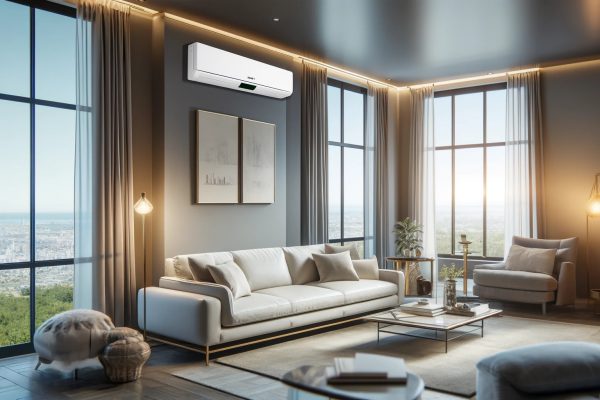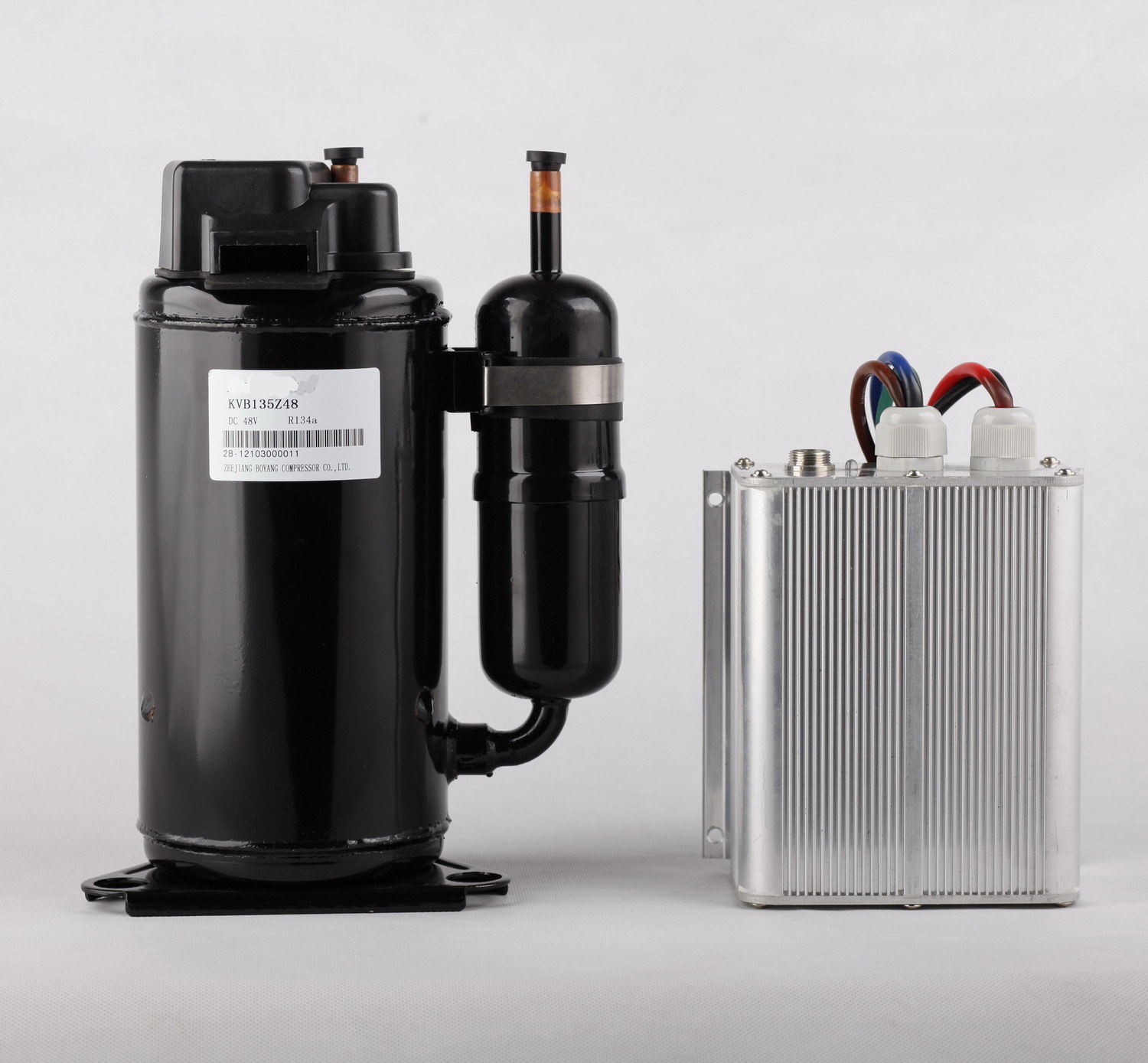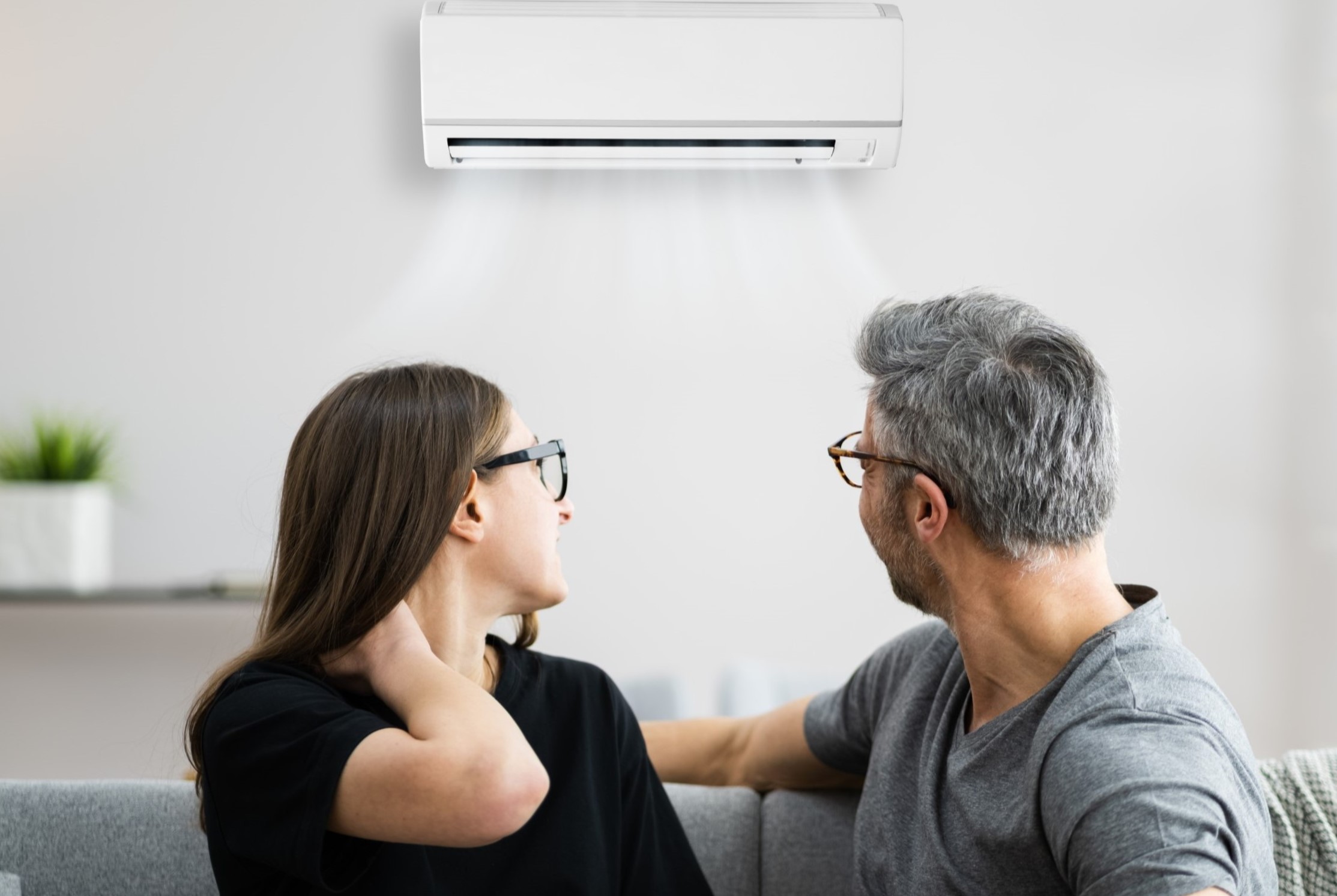Home>Home Maintenance>How Does A Split Air Conditioner Work
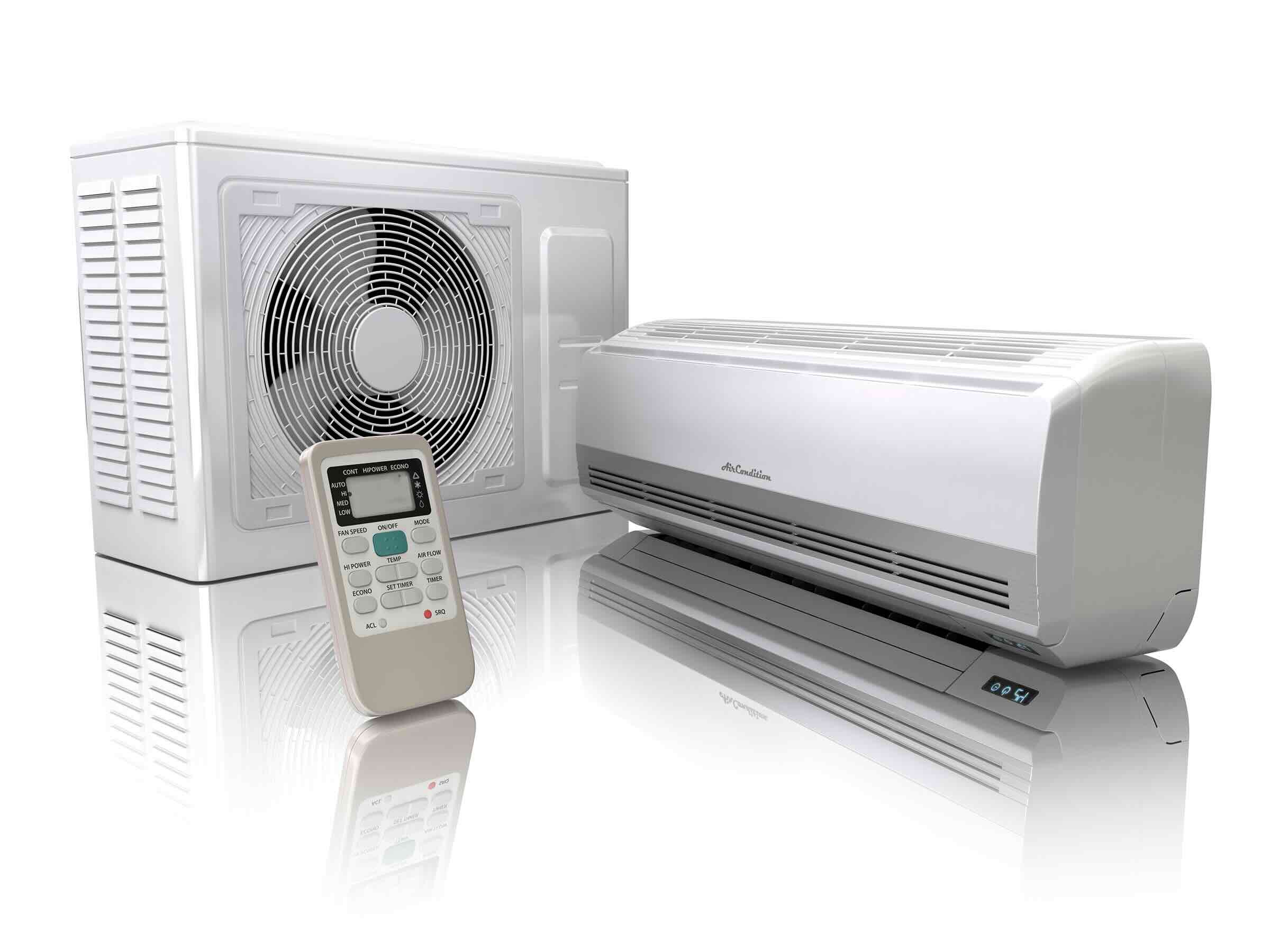

Home Maintenance
How Does A Split Air Conditioner Work
Modified: September 1, 2024
Discover how split air conditioners work for your home maintenance needs. Stay cool and comfortable all year round with this efficient cooling system.
(Many of the links in this article redirect to a specific reviewed product. Your purchase of these products through affiliate links helps to generate commission for Storables.com, at no extra cost. Learn more)
Introduction
Welcome to our comprehensive guide on how a split air conditioner works! Whether you’re looking to understand the inner workings of your cooling system or considering installing a split AC unit in your home, this article will provide you with all the information you need.
Split air conditioners, also known as ductless AC systems, have become increasingly popular due to their energy efficiency and flexible installation options. Unlike traditional central AC systems, which use ductwork to distribute cool air throughout a building, split air conditioners rely on two main components: an indoor unit and an outdoor unit.
In this guide, we will delve into the components, working principles, benefits, and maintenance of a split air conditioner, giving you a clear understanding of its functionality. So, let’s get started and explore how a split air conditioner keeps you cool and comfortable during the hot summer months!
Key Takeaways:
- Split air conditioners use a refrigeration cycle to cool indoor air by absorbing heat and humidity, making them energy-efficient and ideal for maintaining a comfortable indoor environment.
- Regular maintenance, such as cleaning filters and checking electrical connections, is crucial for ensuring the optimal performance and longevity of split air conditioners, providing efficient cooling and comfort.
Components of a Split Air Conditioner
A split air conditioner consists of two main components: the indoor unit and the outdoor unit. Let’s take a closer look at each of these components and their functions.
Indoor Unit:
The indoor unit of a split air conditioner is typically located inside the room or area that needs to be cooled. It includes the following key components:
- Evaporator Coil: This coil helps to remove heat and humidity from the indoor air. It works by evaporating the refrigerant, which absorbs the heat from the air, thus cooling it down.
- Blower Motor: The blower motor is responsible for circulating the cooled air throughout the room. It pushes the air through the evaporator coil and into the room, ensuring consistent and efficient cooling.
- Air Filter: The air filter helps to clean the indoor air by trapping dust, pollen, and other airborne particles. Regular cleaning or replacement of the air filter is essential to maintain good indoor air quality and maximize the efficiency of the air conditioner.
- Thermostat: The thermostat acts as the control panel for the indoor unit. It allows you to set the desired temperature and control various functions of the air conditioner, such as fan speed and mode.
Outdoor Unit:
The outdoor unit houses the key components responsible for the heat transfer process. It includes:
- Compressor: The compressor is often referred to as the “heart” of the air conditioner. It compresses the refrigerant gas, elevating its temperature and pressure.
- Condenser Coil: The condenser coil helps to release heat from the refrigerant. As the hot refrigerant flows through the condenser coil, it transfers the heat to the surrounding outdoor air.
- Fan: The outdoor unit contains a fan that blows air over the condenser coil, assisting in the heat exchange process. It helps to dissipate the heat absorbed from the indoor air into the outdoor environment.
- Expansion Valve: The expansion valve is responsible for regulating the flow of refrigerant into the evaporator coil. It reduces the pressure and temperature of the refrigerant, facilitating the cooling process.
Together, these components work in harmony to provide efficient and effective cooling in your home or office space. Understanding the different parts of a split air conditioner will not only help you maintain and troubleshoot your unit but also enable you to make informed decisions when selecting a new system for your cooling needs.
Refrigeration Cycle
The refrigeration cycle is the process by which a split air conditioner cools and dehumidifies the indoor air. Understanding this cycle is essential to grasp the functioning of a split AC unit. Let’s dive into the four main steps involved in the refrigeration cycle:
- Compression: The process begins with the compressor in the outdoor unit. The compressor receives low-pressure, low-temperature refrigerant gas from the indoor unit, and its role is to compress this gas, leading to an increase in its temperature and pressure.
- Condensation: Once the refrigerant gas is compressed, it is sent to the condenser coil, also located in the outdoor unit. As the hot refrigerant flows through the coil, the surrounding outdoor air helps to cool it down. This conversion from a gas to a liquid state releases heat into the atmosphere.
- Expansion: After the refrigerant has been condensed into a high-pressure liquid, it moves into the expansion valve. This valve regulates the flow of the refrigerant into the evaporator coil in the indoor unit. As the refrigerant passes through the expansion valve, its pressure decreases, causing it to expand and transform into a low-pressure, low-temperature mist-like state.
- Evaporation: The low-pressure refrigerant then enters the evaporator coil, where it absorbs heat from the indoor air. The warm indoor air passes over the coil, and the refrigerant undergoes evaporation, converting back into a gas. This evaporation process cools down the air, which is then circulated back into the room through the blower motor.
After completing the evaporation step, the cycle repeats, with the refrigerant returning to the compressor to be recompressed and start the process again. This continuous cycle of compression, condensation, expansion, and evaporation is what allows a split air conditioner to cool down the indoor air effectively.
It’s important to note that during this refrigeration process, moisture from the indoor air is also condensed and removed, resulting in dehumidification. This helps to create a more comfortable and controlled indoor environment, especially in humid climates.
Understanding the refrigeration cycle not only sheds light on the cooling process of a split air conditioner but also emphasizes the importance of each component in maintaining optimal performance and efficiency. Regular maintenance, such as cleaning the coils and replacing filters, is crucial to ensure the smooth operation of the refrigeration cycle and extend the lifespan of your split AC unit.
Working Principles of a Split Air Conditioner
A split air conditioner operates based on the principles of refrigeration and heat transfer. By understanding how these principles are applied, you can gain insight into how a split AC unit effectively cools and regulates indoor temperature. Let’s explore the working principles of a split air conditioner in more detail:
1. Heat Exchange: The first step in the cooling process involves the exchange of heat between the indoor and outdoor units. The indoor unit absorbs warm air from the room, while the outdoor unit dissipates the heat into the surrounding environment.
2. Refrigerant Circulation: The refrigerant, a special substance that easily transitions between liquid and gas states, plays a crucial role in the cooling process. The refrigerant circulates between the indoor and outdoor units, absorbing heat from the indoor air and releasing it to the outdoor air.
3. Evaporation and Condensation: The refrigerant undergoes two key processes – evaporation and condensation. In the indoor unit, the refrigerant evaporates, absorbing heat from the indoor air and cooling it down. The heat is transferred to the refrigerant as it transforms from a liquid to a gas. Conversely, in the outdoor unit, the refrigerant condenses, releasing heat to the outdoor air as it returns to its liquid state.
4. Air Circulation: The split air conditioner utilizes a blower motor in the indoor unit to circulate the cooled air throughout the room. The blower motor pushes air over the evaporator coil, where it is cooled, and then distributes the cooled air back into the room. This process ensures a consistent and comfortable indoor temperature.
5. Thermostat Control: The thermostat acts as the control center, allowing users to set their desired temperature. It establishes communication between the indoor and outdoor units and triggers the AC system to turn on or off to maintain the desired temperature level.
By employing these working principles, a split air conditioner efficiently cools the indoor environment and maintains a comfortable temperature. The separation of the indoor and outdoor units eliminates the need for ductwork, making split AC systems more flexible in terms of installation and reducing energy loss associated with ducted systems.
Understanding the working principles of a split air conditioner can help you make informed decisions when selecting, operating, and maintaining your unit. Regular maintenance, such as cleaning the filters and coils, ensures optimal performance and energy efficiency. By following these principles, your split air conditioner will continue to provide reliable cooling and comfort for years to come.
Indoor Unit Operations
The indoor unit of a split air conditioner is responsible for cooling the indoor air and distributing it throughout the room. It performs several key operations to ensure efficient and effective cooling. Let’s take a closer look at the operations of the indoor unit:
1. Air Intake: The indoor unit draws warm air from the room through an air intake grille or vent. This warm air contains heat and humidity that need to be removed for optimal comfort.
2. Air Filtration: Before the air is cooled, it passes through an air filter. The air filter traps dust, pollen, and other airborne particles, ensuring cleaner and healthier indoor air quality. Regular cleaning or replacement of the air filter is essential to maintain good air quality and maximize the efficiency of the air conditioner.
3. Cooling Process: The main cooling process takes place in the indoor unit’s evaporator coil. The refrigerant, which enters the coil as a low-pressure, low-temperature mist, absorbs the heat from the warm indoor air. As the refrigerant evaporates, it cools the air, which is then circulated back into the room.
4. Blower Motor Operation: The blower motor plays a vital role in the indoor unit’s operations. It is responsible for circulating the cooled air throughout the room. The blower motor pulls the air over the evaporator coil, enhancing the cooling process, and then pushes the cooled air out through the air vents or ducts.
5. Thermostat Control: The indoor unit is equipped with a thermostat that allows users to set the desired temperature. The thermostat continuously monitors the room temperature and communicates with the outdoor unit to maintain the set temperature. It also provides control over additional features such as fan speed, mode selection, and timer settings.
Overall, the indoor unit is the primary interface between the split air conditioner and the indoor environment. It ensures the efficient and effective cooling of the indoor space, providing you with a comfortable and pleasant living or working environment.
Regular maintenance is crucial to keeping the indoor unit in optimal condition. This includes cleaning or replacing the air filter, checking the blower motor’s performance, and ensuring proper thermostat calibration. By maintaining the indoor unit, you can maximize its cooling capabilities and achieve the best possible performance from your split air conditioner.
Regular maintenance of a split air conditioner, such as cleaning or replacing the filters, can improve its efficiency and prolong its lifespan.
Read more: How Does A Ductless Air Conditioner Work
Outdoor Unit Operations
The outdoor unit of a split air conditioner plays a crucial role in the cooling process. It houses key components responsible for heat transfer and release. Let’s explore the operations of the outdoor unit in more detail:
1. Heat Dissipation: The outdoor unit is designed to dissipate the heat collected from the indoor air. It accomplishes this through a combination of processes:
- Condenser Coil: The condenser coil, located in the outdoor unit, receives the high-pressure, high-temperature refrigerant gas from the compressor. As the refrigerant flows through the condenser coil, it releases heat to the surrounding outdoor air, thereby cooling down and transforming into a high-pressure liquid state.
- Outdoor Fan: The outdoor unit contains a fan that blows air over the condenser coil, facilitating the heat exchange process. By drawing in outdoor air and blowing it across the condenser coil, the fan helps to dissipate the heat absorbed from the indoor air.
2. Refrigerant Compression: The outdoor unit houses the compressor, which plays a critical role in the refrigeration cycle. The compressor receives the low-pressure, low-temperature refrigerant gas from the indoor unit and compresses it. This compression process increases the temperature and pressure of the refrigerant, preparing it for the subsequent condensation and heat release in the condenser coil.
3. Refrigerant Expansion: After the refrigerant has been compressed, it moves into the expansion valve. The expansion valve controls the flow of the refrigerant into the indoor unit’s evaporator coil. As the refrigerant passes through the expansion valve, its pressure decreases, leading to the expansion and cooling of the refrigerant.
4. Connection and Communication: The outdoor unit is connected to the indoor unit via refrigerant lines and electrical connections. These connections allow for the exchange of refrigerant and electricity between the two units. Additionally, the outdoor unit is in constant communication with the indoor unit’s thermostat, ensuring precise temperature control.
The operations of the outdoor unit are crucial in the proper functioning of a split air conditioner. It efficiently dissipates heat collected from the indoor air, allowing for the continuous cooling and dehumidification process. Proper maintenance of the outdoor unit, including regular cleaning of the condenser coils and ensuring the fan is free of debris, is essential for optimal performance and energy efficiency.
By understanding the operations of the outdoor unit, you can better appreciate the coordinated efforts between the indoor and outdoor components of a split air conditioner. This knowledge will not only help you troubleshoot any issues that may arise but also enable you to take proactive measures in maintaining and prolonging the lifespan of your split air conditioning system.
Benefits of a Split Air Conditioner
Split air conditioners offer numerous benefits that make them a popular choice for cooling homes and offices. Whether you’re considering installing a new AC system or upgrading from a window unit, here are some key advantages of opting for a split air conditioner:
1. Energy Efficiency: Split air conditioners are known for their energy efficiency. Compared to traditional central AC systems, which can have significant energy losses through ductwork, split AC units eliminate the need for ducts altogether. This results in better energy utilization and reduced cooling costs.
2. Zone Cooling: Split air conditioners provide the option for zone cooling, allowing you to cool specific areas or rooms as needed. Each indoor unit can be controlled independently, so you have the flexibility to customize cooling settings based on occupancy and comfort preferences. This zoning capability not only enhances comfort but also helps conserve energy by cooling only the necessary spaces.
3. Quiet Operation: The split design of these AC units ensures quieter operation compared to window or portable units. The noisy components, such as the compressor and condenser, are located in the outdoor unit, minimizing indoor noise levels and offering a more peaceful environment.
4. Improved Indoor Air Quality: Split air conditioners typically come equipped with air filters that help improve indoor air quality. These filters capture dust, pollen, and other airborne particles, reducing allergens and providing cleaner and healthier air for occupants. Regular cleaning or replacement of these filters is essential for maintaining optimal indoor air quality.
5. Flexible Installation: Split air conditioners offer greater installation flexibility compared to central AC systems. The indoor units can be mounted on walls or ceilings, providing more layout options and eliminating the need for extensive ductwork. This versatility makes split AC units ideal for both new construction projects and retrofitting existing spaces.
6. Space-Saving Design: The compact nature of split air conditioners makes them ideal for areas with limited space. With the elimination of bulky ducts, the indoor units are sleek and unobtrusive, fitting seamlessly into the room’s design without taking up valuable floor space.
7. Improved Aesthetics: Split air conditioners offer an aesthetically pleasing alternative to window or portable units. With only the indoor unit visible inside the room and the outdoor unit placed outside, the overall appearance of the space remains clean and uncluttered.
These are just a few of the major benefits of using a split air conditioner. From energy efficiency and zone cooling to improved indoor air quality and flexible installation options, split AC units offer a range of advantages that will enhance your comfort and convenience in any indoor environment.
Energy Efficiency of Split Air Conditioners
Energy efficiency is a major consideration when it comes to selecting any cooling system, and split air conditioners are known for their excellent energy-saving capabilities. By understanding the factors that contribute to their efficiency, you can make an informed decision about whether a split AC unit is the right choice for your needs. Here are the key factors that make split air conditioners highly energy efficient:
1. Ductless Design: One of the primary reasons for the energy efficiency of split air conditioners is their ductless design. Unlike central AC systems that rely on ductwork to distribute air, split AC units don’t suffer from the energy loss associated with ducts, such as leakage and lack of insulation. Without the need for ducts, split air conditioners can deliver cooled air directly to the room, ensuring minimal energy wastage.
2. Inverter Technology: Many modern split air conditioners incorporate inverter technology, which enhances their energy efficiency. Inverter compressors adjust their speed according to the cooling demand, allowing the system to operate at lower capacities when the room is already cool or partially occupied. This variable-speed operation helps save energy by avoiding frequent on/off cycles, reducing overall power consumption.
3. Zone Cooling: Split air conditioners offer the ability to cool specific zones or rooms individually. With separate indoor units controlled independently, you can cool only the areas that are occupied, rather than wasting energy cooling the entire space. Zone cooling allows for greater temperature control and energy savings, as you can optimize cooling according to your needs.
4. Energy-Saving Modes and Features: Many split air conditioners come equipped with energy-saving modes and features. These can include sleep modes that gradually adjust temperature and fan speeds for optimal comfort and energy efficiency during night-time operation. Additionally, programmable timers allow you to schedule cooling periods, so the system doesn’t run when it’s not needed, further conserving energy.
5. High SEER Ratings: The Seasonal Energy Efficiency Ratio (SEER) is a measure of an air conditioner’s energy efficiency. Split air conditioners often have high SEER ratings, indicating their ability to provide efficient cooling while using minimal energy. Opting for a split AC unit with a high SEER rating ensures maximum energy savings and reduced carbon footprint.
6. Regular Maintenance: Proper and regular maintenance is essential for maintaining the energy efficiency of any air conditioning system, including split air conditioners. Simple tasks like cleaning or replacing filters, checking refrigerant levels, and ensuring proper airflow can significantly impact the unit’s energy efficiency and cooling performance.
By considering these energy-saving factors, you can ensure that your split air conditioner operates at its highest efficiency, minimizing energy consumption and reducing your overall cooling costs. Additionally, look for models with energy efficiency labels or certifications, as these indicate compliance with industry standards for energy performance.
Investing in an energy-efficient split air conditioner not only benefits your wallet but also contributes to environmental sustainability. With their ductless design, inverter technology, and zone cooling capabilities, split air conditioners offer a smart and eco-friendly choice for cooling your home or office space.
Maintenance and Troubleshooting Tips
To ensure the optimal performance and longevity of your split air conditioner, regular maintenance is essential. Additionally, understanding common troubleshooting techniques can help identify and resolve issues promptly. Here are some maintenance and troubleshooting tips to keep your split AC unit running smoothly:
1. Clean or Replace Air Filters: The air filters in the indoor unit play a crucial role in maintaining good air quality and efficient operation. Clean or replace the filters regularly, ideally once every month or as recommended by the manufacturer. Clogged filters restrict airflow, reducing cooling efficiency and potentially leading to system malfunctions.
2. Clean the Condenser Coil: The condenser coil in the outdoor unit can accumulate dirt, debris, and leaves over time. Regularly inspect and clean the coil to maintain optimal heat exchange. Use a vacuum or a soft brush to gently remove any dirt or debris that may obstruct airflow.
3. Check for Refrigerant Leaks: Low refrigerant levels can significantly impact the cooling performance of your split AC unit. If you notice a reduction in cooling capacity or longer cooling cycles, it may indicate a refrigerant leak. Contact a certified technician to inspect and repair any leaks and recharge the system with the proper refrigerant if necessary.
4. Inspect the Outdoor Unit: Periodically inspect the outdoor unit for any obstructions, such as vegetation or debris. Ensure there is ample space around the unit for proper airflow. Trim any nearby plants or shrubs that may obstruct the airflow or affect the performance of the unit.
5. Check the Thermostat Settings: Ensure that the thermostat is set to the desired temperature and mode. If the AC is not cooling as expected, verify that the thermostat is functioning properly and replace the batteries if needed. Make sure that the thermostat is not exposed to direct sunlight or heat sources that may affect its accuracy.
6. Verify Power Supply and Electrical Connections: Check the power supply to the AC unit and ensure that there are no tripped breakers or blown fuses. Inspect the electrical connections, both indoor and outdoor, to make sure they are secure. Loose connections can cause intermittent operation or system malfunctions.
7. Seek Professional Help: If you encounter any complex issues or if your DIY troubleshooting efforts do not resolve the problem, it is best to seek professional assistance from a qualified technician. They have the expertise to diagnose and repair any underlying issues, ensuring the proper functioning of your split AC unit.
Remember, regular maintenance and prompt troubleshooting can prevent major problems and extend the lifespan of your split air conditioner. By following these tips, you can enjoy efficient cooling and improved comfort throughout the year.
Read more: How Does A Central Air Conditioner Work?
Conclusion
Split air conditioners offer a versatile and efficient cooling solution for homes and offices. Understanding how these systems work and their various components can help you make informed decisions when selecting, operating, and maintaining a split AC unit.
In this comprehensive guide, we explored the components, refrigeration cycle, and working principles of a split air conditioner. We also discussed the operations of both the indoor and outdoor units, highlighting their roles in achieving optimal cooling and comfort.
Split air conditioners bring several benefits to the table, including energy efficiency, zone cooling capabilities, quiet operation, and improved indoor air quality. The ductless design, inverter technology, and high SEER ratings contribute to their energy-saving capabilities, resulting in reduced energy consumption and lower cooling costs.
To ensure the longevity and efficiency of your split AC unit, regular maintenance is crucial. Cleaning or replacing air filters, inspecting and cleaning condenser coils, checking refrigerant levels, and monitoring thermostat settings are essential maintenance tasks. Additionally, troubleshooting tips can help identify and resolve common issues promptly, ensuring uninterrupted cooling performance.
By following these guidelines, you can enjoy the benefits of a well-maintained and properly functioning split air conditioner, providing you with the comfort and coolness you desire while maximizing energy efficiency and minimizing environmental impact.
Remember, when in doubt or facing complex issues, it is always best to seek professional help from qualified technicians to ensure the proper diagnosis and resolution of any problems.
We hope this guide has provided you with valuable insights into the workings and benefits of split air conditioners. With this knowledge in hand, you can confidently make informed decisions to enhance your home or office cooling experience.
Frequently Asked Questions about How Does A Split Air Conditioner Work
Was this page helpful?
At Storables.com, we guarantee accurate and reliable information. Our content, validated by Expert Board Contributors, is crafted following stringent Editorial Policies. We're committed to providing you with well-researched, expert-backed insights for all your informational needs.

